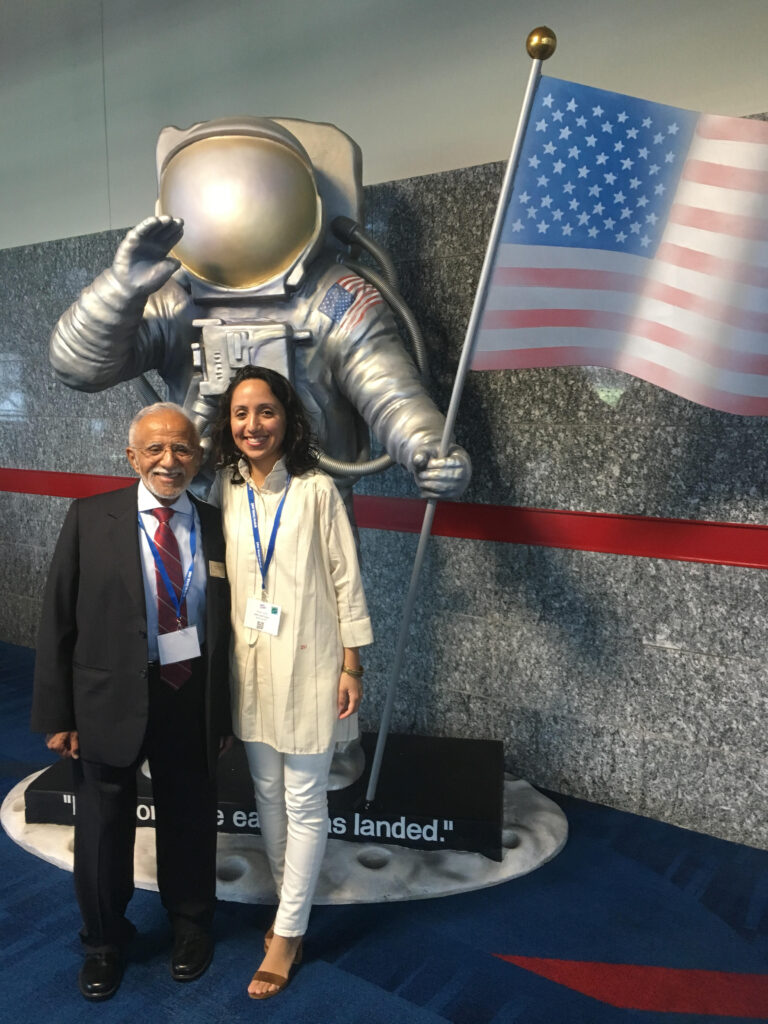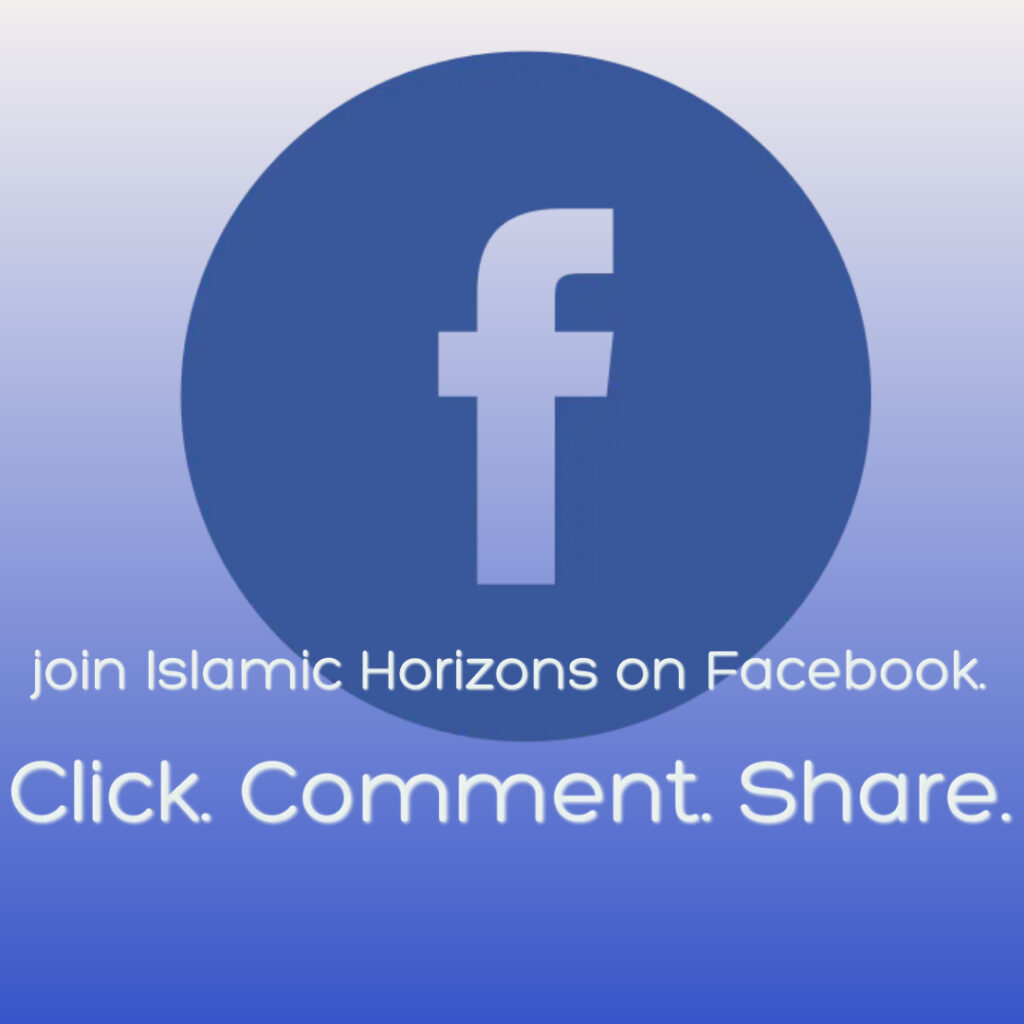A Journey That Started 29 Years Ago
By Islamic Horizons Staff
Sept/Oct 2023

In the early 1990’s, ISNA leadership asked Dr. Sayyid Muhammad Syeed to take over the helm during challenging times. ISNA’s flagship publication, Islamic Horizons, was also suffering.
Soon after his arrival at ISNA headquarters, Dr. Syeed invited Omer Bin Abdullah to serve as the editor of the magazine. OBA — as he is known to his near and dear — was born into print media. It is said that he set aside the English alphabet book and insisted on learning it through Lahore’s newspaper, The Pakistan Times. It was through this foundation that he learned to read and write voraciously. With postgraduate degrees in both journalism and advertising, OBA was a great choice.
At a meeting with a new printing company, he asked for a quote based on the paper quality and color of a Sears catalog he had saved from the Sunday newspaper. The printer agreed, but there was a catch: He only accepted jobs of 15,000 or more. Dr. Syeed agreed upon the number when he learned that on average, a magazine is seen by four people in a household. That would make an initial readership of 60,000.
September Means September
OBA assumed all the responsibilities associated with such an undertaking. “I was everything from the editor, writer, advertising salesperson, accountant, and author recruiter,” he reminisces. “I then went around the ISNA office to collect various magazines and started calling advertisers.” One of their first questions was when the next issue will be mailed out. Omer assured them that “September means September” and that they would find the magazine at that year’s ISNA Convention.
29 years later, Islamic Horizons magazine has always been delivered on time. That is no small feat with only one person in charge of the content.
Not only did Islamic Horizons lack staff, but it also needed interesting content that prospective subscribers would like to read. OBA wrote a lot of the content for the first few issues. The stories and the fresh new look were an instant success. Consistent and timely issues gave impetus to advertisers not only to return, but also to increase their ad sizes. As the ball got rolling, ISNA decided to double the print order to 30,000, and later to 60,000 copies.
People started taking an interest in and inquiring about how to publish articles in the magazine. The quality of the articles continued to improve.
From the design perspective, Anjum Mir made a significant contribution. The masthead she designed continues to adorn the cover. When she left, it was difficult to find a Muslim designer in Plainfield, In. who could find appropriate graphics for the articles. When they were finally able to find one, he also came with a caveat. He would work flexible hours. That sounds commonplace today. However, it was not that convenient before high-speed internet, Zoom and Google Suite. OBA would wait for him to ring the headquarters doorbell, even if it was at 2a.m.
OBA also faced personal challenges during this time and when his health did not allow him to continue living in what was once a grand farmhouse, he started working remotely from his home in Northern Virginia. This way he could also be close to his wife and two children.
OBA brought on Omar Elhaddad, a gifted graphic artist and desktop publisher, and Jay Willoughby, an experienced copyeditor. Their professionalism, along with that of Gamal Abdelaziz, who eventually replaced Elhaddad, has raised the magazine’s profile and encouraged more people to contribute. Over the years, scores of seasoned and new writers graced the pages of this popular magazine.
“Omer Uncle’s tenacity and humor has kept the magazine afloat at a time when many other publications have closed down,” said Saba Ali, Islamic Horizons board member (and incidentally, like him a Syracuse alum). “He has given countless young writers, me included, a platform to tell our stories and our Muslim community a voice that is uniquely ours.”
The Inclusive Coverage
From day one, Islamic Horizons’ staff has worked hard to make the magazine more inclusive by highlighting various Muslim communities both within North America and abroad. For instance, the cover report on African American Muslims impressed the (late) Imam WD Mohammad so much that even though he had only sought three copies, he eventually asked for 5,000 more. ISNA rushed the print order and gifted it to him.
Upon seeing the issue, Louis Farrakhan also requested 500 copies by courier for distribution to the heads of delegations attending a conference being held by the Organization of African Unity.
In 2003, OBA obtained an exclusive photographer’s bird’s-eye view of the hajj from photography enthusiast Princess Reem al-Faisal, granddaughter of King Faisal. Among the many other outstanding issues, Omer takes personal pride in publishing the cover story “Jerusalem: A Muslim City” (Jan/Feb 2001) and the grand cover report on poet-philosopher Mohammad Iqbal (March/April 2005).
The effort to keep the North American community informed continues. Islamic Horizons has highlighted Latino and Indigenous North American peoples, the Cham of Vietnam and Cambodia as well as the Rohingya of Myanmar, and other minorities of our ummah.
The Documentation
Islamic Horizons has also featured, whenever possible, reports on North American cities with large Muslim populations (such as Chicago, Detroit, and Dallas) to record the history of Islam and Muslims on this continent. This includes articles on Islamophobia and various polls conducted among Muslims; the election or appointment of Muslims to local, state, and federal offices; as well as the ongoing establishment of mosques and/or Islamic centers and schools.
OBA said. “We request pioneers to contact us and relay their memories. We consider it a vital undertaking to record our history for our descendants.”
Islamic Horizons has also garnered praise from its own genre — publications by religious organizations. It has secured several awards from the century-old Religious Communicators Council — of which it is the only Muslim member. OBA considers it a crowning moment when his alma mater, Syracuse University, contacted him to let him know that they had decided to bind, shelve, and catalog Islamic Horizons, thereby making it more accessible to everyone.
“Unfortunately, our community’s support in terms of both subscribing and contributing informative articles has been negligible,” OBA said. “While 60,000 families were glad to receive the magazine for free at one point, only few of them subscribed when the complimentary issues stopped.”
The Vision
OBA envisages Islamic Horizons as a mix of community news and Time/Newsweek sort of publication. Therefore, he has highlighted the situations in many parts of the Muslim world and presented accounts of events and other information that is not reported in the Western media. He also strives to obtain reports and first-hand accounts to highlight the challenges faced by Muslims living under occupation and as minorities.
Clearly, existing Muslim media outlets cannot improve and flourish without institutional support. Moreover, unlike mainstream media outlets, the reality of Islamophobia prevents it from garnering a great deal of advertising revenue.
A strong believer in the print media’s ability to survive, he cites the example of the retail industry that, despite having top-notch websites, keeps mailing expensive catalogs. In short, he sees hope.
“During these nearly three decades, I have faced multiple health issues, like complicated fractures and illnesses,” OBA adds. “But despite such problems, Islamic Horizons has never missed its publication date or compromised on its quality. The small staff we have at the magazine staff continues its efforts to continue my vision. I invite our magazine readers to join us in this ongoing effort.”
A Hardworking Family Man
Despite being a wordsmith, OBA finds it hard to express appreciation for the support he has received from his wife and children while rebuilding the magazine — an unstinted support that continues even today.
His dedication has not gone unnoticed.
“Coming from a line of writers, my dad would often tell me that his passion for writing ran in his blood,” said his daughter, Amal Omer. “He believes deeply in the value of Islamic Horizons sharing the positive work of the Muslim community. With his work on the magazine, he shared that he hoped the stories inspired our Ummah — especially the next generation — to remain strong and committed to practicing their faith.”
“I recall my dad frequently shuttling between Virginia and Indiana, dedicating himself to working on the magazine,” said Ali Omer, his son. “He went to great lengths, even residing in Plainfield for a few months, as he tirelessly strived to resurrect an abandoned publication and transform it into a nationally recognized and acclaimed magazine. It has truly been a labor of love for him, pouring his heart and soul into it for the betterment of the Ummah.”
Tell us what you thought by joining our Facebook community. You can also send comments and story pitches to horizons@isna.net. Islamic Horizons does not publish unsolicited material.
